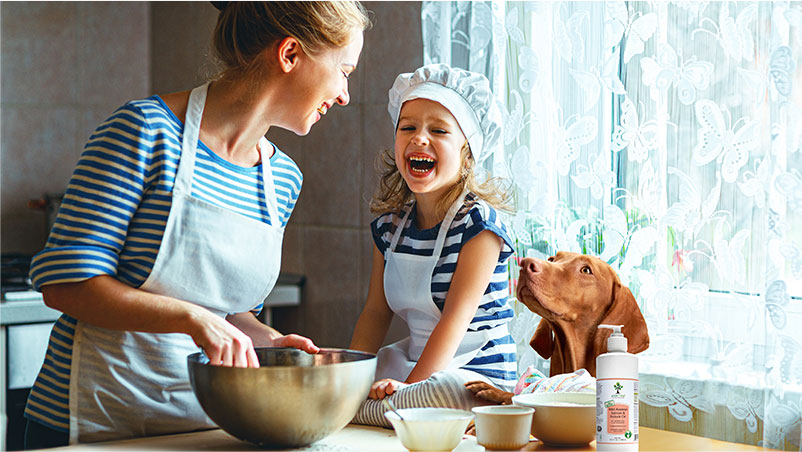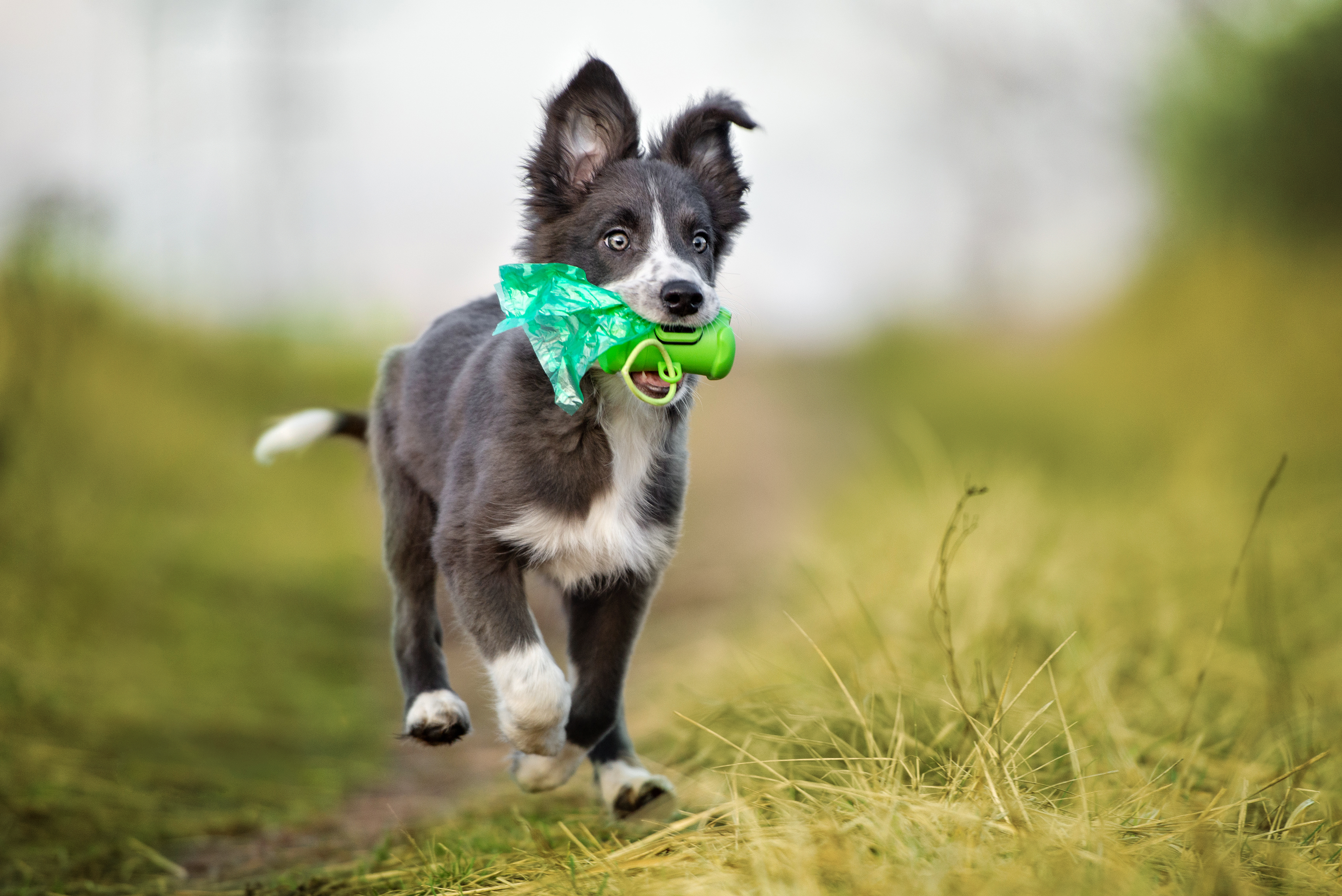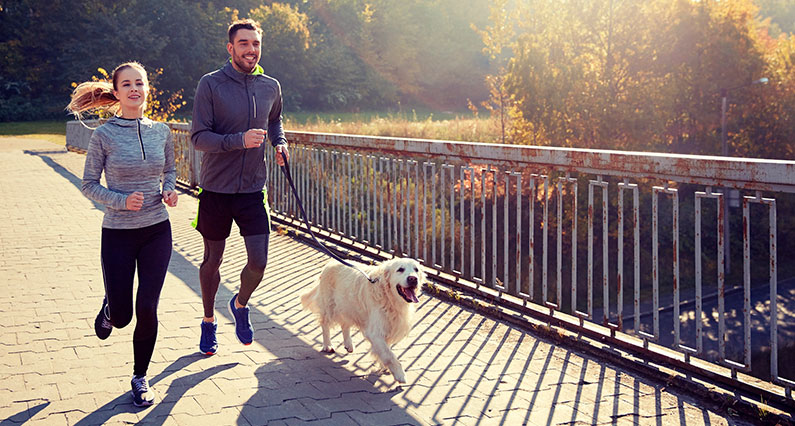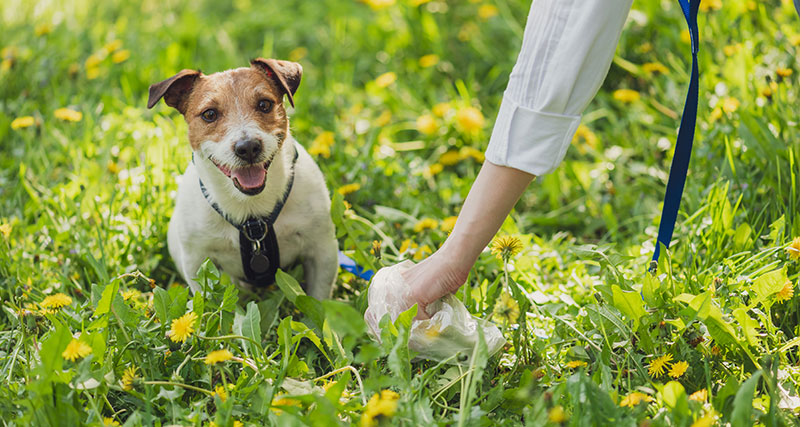Poop isn’t always the most pleasant topic of conversation,
but amongst dog owners,
it’s an important one. Believe it or not,
there’s a lot to learn from your pup’s stool !
Your dog’s gastrointestinal tract contains about 70% of their
immune system. Because of this,
you can think of your dog’s waste as a window into their overall health. Healthy poops=a healthy pup.
If
your dog’s stool changes quality or color,
this might be a sign they’re not feeling their best. The color,
shape,
consistency and smell of your dog’s waste will give you useful hints as to what their gut health might be like.
At pawTree,
we recommend paying attention to what your dog’s stool looks like day to day. That way,
you can spot any potential health risks and make a vet visit if needed.
So, What Does Healthy Dog Poop Look Like?
To start off,
it’s helpful to know what high-quality dog poop looks like ! Generally,
healthy dog stool is chocolate-brown,
firm,
log-shaped and easy to scoop. That being said,
poops vary a little from pup to pup,
so the most important thing to watch for is inconsistencies.
If your dog’s stool suddenly changes color,
smell,
or consistency,
your fur baby might be experiencing digestive issues. If the unusual poops continue for more than a day or two,
be sure to take a trip to the vet.
Types Of Dog Poop & What They Mean

Any pet parent knows that poop comes out in all shapes and sizes. What do these variations mean for your pup’s health? Here’s what you need to know.
Shape & Consistency
As mentioned above,
high-quality dog poop is usually log-shaped and firm enough to scoop up easily. Here are some of the other types of
stool you might see and what they might mean.
Crumbly Pellets Or Hard Logs
This usually
means your fur baby is constipated. It could be a result of dehydration or a lack of fiber in your pup’s diet. Make
sure your pet has access to water and add fiber to their diet !
Soft,
Mushy Logs Or Blobs
Softer,
non-diarrhea stools are sometimes the result of not enough fiber and sometimes the result of poor-quality food. This
is a common response to highly processed or starchy foods that are hard to digest.
Highly digestible and
nutrient-dense food is extremely important to overall pet health;
Luckily,
your dog’s stools can help indicate whether they’re getting what they need from their food ! If you’re seeing soft
stools,
it’s time to level-up your fur baby’s food quality.
Soft Liquid With No Shape
Dog
diarrhea is a surefire sign your pup’s stomach is unhappy. If you’ve just switched to a new food,
don’t worry too much. If not,
your pup might have eaten something they shouldn’t have.
Always consult with your veterinarian if you notice
changes in your dog's stools.
Color
Another sign of health is the color of your pup’s stools ! Remember, high-quality dog poops are a chocolate brown. If your fur baby’s waste is coming out other colors, here’s what might be happening.

White
If the poop has white flecks in it,
this is a sign that there might be worms in the dog poop. Take your pup to the vet to check for tapeworms ! If your
dog’s stool is white overall,
they might be getting too much calcium.
Red/Black
Red or black poop means your pup might
have internal bleeding. Red poop is a sign that the bleeding is occurring nearer to the exit,
while black,
tarry poop means the bleeding is farther up in the gastrointestinal tract. Black poop could also be a sign of
cancer,
parasites or other foreign pathogens.
Green
Green poop might just mean your pup ate
grass. It could also mean a gallbladder issue. If your dog’s stool is bright green,
it could mean they’ve consumed poison. If you think there’s a chance your dog ate rodent traps,
take them to the emergency vet immediately.
Yellow/Orange
Orange and yellow poops are
often caused by the way the bile breaks down food. Sometimes,
it indicates liver issues.
Mucousy
Mucous helps poops move through the intestines,
so a little bit of mucous is normal ! If you see excessive mucous,
it might mean infections or parasites.
Gray/Greasy
Gray or greasy stools could be a sign
that your fur baby has too much fat in their diet. It can also be an indicator of bile or pancreas issues.
Remember,
if you notice any changes in your dog’s elimination schedule and you haven’t changed their food recently,
contact your veterinarian to rule out any potential problems.
Smell

Poops that have foul odors are indicators that your pup isn’t absorbing the nutrients in their food ! This is usually
because the food isn’t digestible or is highly processed.
Not only can higher-quality food make your pup’s
poops less smelly,
it can also lead to your pup pooping less ! High-quality food,
like pawTree’s,
is nutrient-dense,
highly digestible,
and free of artificial ingredients. This kind of food will protect your fur baby’s gut and digestive health in the
long run.

|
pawTreats® Freeze Dried Beef Liver$16.99Shop Now! |

|
Gastro Pro Plus$29.99Shop Now! |

|
pawTreats® Freeze Dried Beef Liver$16.99Shop Now! |

|
Gastro Pro Plus$29.99Shop Now! |
Frequency
There’s no real consistency amongst dogs in terms of how often they poop. Every pup is different ! Pay attention to
your pup’s typical behavior,
so you can tell when something is off.
Pet parent tip: A gut supplement like Gastro Pro Plus can boost your fur baby’s digestive health immensely ! It delivers
probiotics,
prebiotics,
digestive enzymes and soothing herbs for more high-quality dog poops.
While we may not love scooping it,
our dog’s poop is a great first insight into their overall health ! By looking out for our pup’s gut and digestive
health,
we love our fur babies a little better. And remember: If you encounter any abnormalities,
trust your veterinarian.
You Might Also Like

3 Spring Salmon Oil Recipes for Dogs and Cats Read More |

Training Essentials: The Complete Guide To Potty Training Puppies Read More |
.jpg)
How To Stop Dogs From Eating Poop (And Why They Do It) Read More |

3 Spring Salmon Oil Recipes for Dogs and Cats
Training Essentials: The Complete Guide To Potty Training Puppies
How To Stop Dogs From Eating Poop (And Why They Do It)



